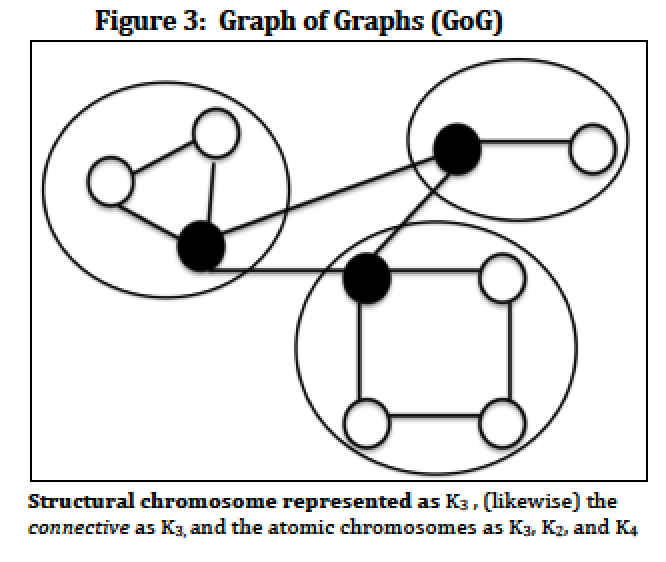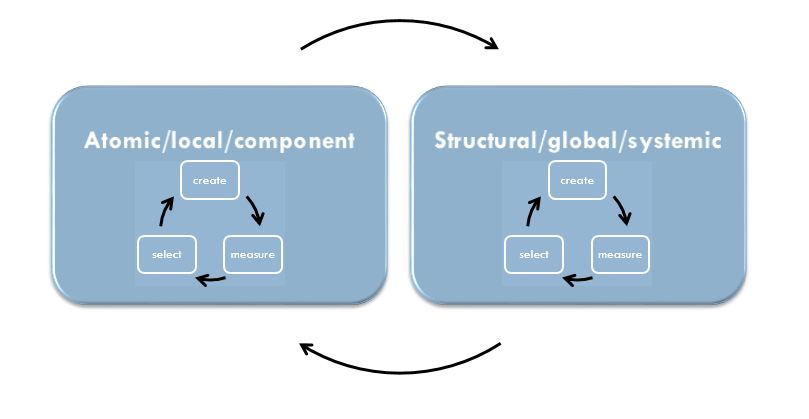GOGG: Graph of Graphs Generator
Nested structures to support Hierarchical Genetic Evolution
Cameron Lamir, Undergraduate Research Student
VAIL Undergraduate Research Group - ROLLINS COLLEGE
Dr. Jennifer Seitzer, Director
jseitzer@rollins.edu
407-646-2303

This work describes a system that serves as a generative as well as an evaluative tool to represent nested chromosomes
as well as measure them using dual fitness functions: one of the atomic and one of the structural, to enable the work of HGAs modeling CAESs. We have implemented HGAs in two other systems [Calvo2011] and [Wei2011] and are now engaged in applying this work to the modeling and evolution of CAESs using this tool, Graph-of-graphs Generator.
The driving motivation for developing system GOGG lay in both deductive and inductive applications. In the inductive domain, GOGG is being used to measure nested chromosomes in the simultaneous evolution of a solution at two different abstraction layers – providing a mechanism for fitness evaluation of nested chromosomes used in hierarchical genetic algorithms. In the deductive realm, plans are being made for system GOGG to provide a repository of hierarchical knowledge.
Application o HGA
A Hierarchical Genetic Algorithm (HGA) is an
algorithmic technique of artificial intelligence that
converges on a solution at both the atomic and
structural levels. Complex adaptive and emergent
systems (CAESs) are ubiquitous in our world—
appearing as beehives, to social systems, to the
brains in our heads that contemplate them. The
modeling techniques used for understanding and
predicting behavior of these systems in the past
been ordinary differential equations, cellular
automata, evolutionary game theory, agent based
models, and networks [Ahmed2005]. Because of
their implicit nested structure, self-organizing and
iterative nature, however, we contend that HGAs
show great promise to provide an alternative
method of modeling CAESs.

Graph Theory and HGAs
One genre of problems that allow us to study
CAESs using HGAs are graph theory problems.
The undirected graph is a fundamental, widely
used formalism for problem representation
[Gross1999]. Moreover, cellular automata, which
are based on one graph, have been successfully
used to model CAESs [Fryer2004]. Our interest in
expanding the consideration of graph theory to
HGAs and CAESs is that many graph theory
algorithms require both local and global attention.
This ‘zooming in’ at each vertex and ‘zooming out’
to consider the whole graph as a structural entity is
precisely the interaction of an HGA system as it
vacillates between the atomic and structural levels.
Related Documents to GOGG